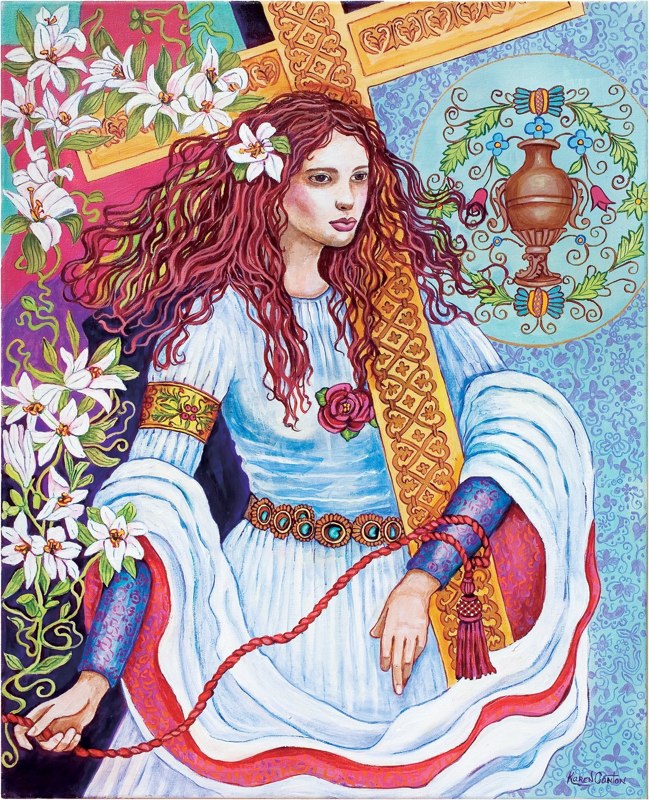Mary Magdalene: Despairing but not broken

Almost fifteen years ago, I had cancer. It was a tough time. I prefer acupuncture and yoga, but modern medicine clearly saves lives, and saved mine. My point is this: the valley of the shadow of death is a tough place. You’re surprised by who is there—and who is not. People on the edges surprise you: a kind pharmacy assistant, a generous-with-time relative, a quiet neighbor.
Jesus also had a surprising from-the-edges presence with him during his final days and moments: Mary Magdalene. She never let him down; she stayed by his side through danger, fear, isolation and grief—and she came to his tomb, just to be as near to him as was humanly possible.
He begged the disciples to stay awake in the Garden, but they couldn’t. We don’t see them at the trial. They weren’t there at the cross, save one. They do not take the initiative to visit the tomb until two of them, Peter and John, are summoned. By her. Their absence and fear is understandable, but it’s still that—absence and fear.
Her actions are reported in all four gospels:
In Matthew (28 1:10), Mary Magdalene and “the other Mary” go to “see the tomb.” They hear an angel say that Jesus has risen, run to tell the disciples, and are met by Jesus.
In Mark (16:1-8), the first ending places her (and the other women) at the empty tomb with spices so that they might anoint Jesus’ body. They are too stunned to talk when an angel says that Jesus has risen, and flee with “terror and amazement.” The second ending (Mark 16:8-11) has Jesus appearing to Mary Magdalene and she tells the disciples, but they do not believe her.
In Luke (24:1-11), Mary Magdalene and the other women go to the tomb with spices, and two angels ask why they seek the living among the dead, for Jesus has risen. When they share the news with the disciples, they are told that “their words seem like an idle tale.” Peter, bless him, did go to the tomb to investigate.
In John (20:1-18), Mary goes to the tomb simply to be near Jesus (for Nicodemus had already brought 100 pounds of spices), finds it empty, runs to Peter’s house, and returns with Peter and John. Peter enters the tomb and sees nothing but Jesus’ burial clothes. John enters and believes, albeit quietly. And then they leave.
Yet Mary stays, crying.
She finally summons the courage to look in the tomb…and sees something that Peter and John didn’t. (It was a small space; clearly the angels, in those few minutes between the men looking in and Mary Magdalene looking in, chose to reveal themselves to her…or perhaps she was more capable of seeing angels).
“Woman, why are you weeping?” they ask.
“Because they have taken my Lord and I do not know where he is,” she replies.
And then another voice.
“Woman, why are you weeping?”
It is Jesus, revealing himself first to Mary Magdalene: his friend, his confident, and now his minister of social media. She will be the one to report that he is indeed alive and well—for the ages. Interestingly, we never hear from Mary Magdalene when Jesus is alive. Her first words are recorded only after his death and resurrection.
In the valley of shadow of death, we meet and are comforted by surprising people: those from the edges like Mary Magdalene, humans acting like angels, and angels dressed like humans.
In John’s Gospel, Mary was at the tomb not to prepare Jesus’ body for its final rest, but simply because she wanted to be near Jesus. May we, too, approach these final days of Lent with that same desire: to be near Jesus. The rest will fall into place.
Artwork: Karen N. Canton, Mary Magdalene, from The Scarlet Cord: Conversations with God’s Chosen Women, author, Lindsay Hardin Freeman

